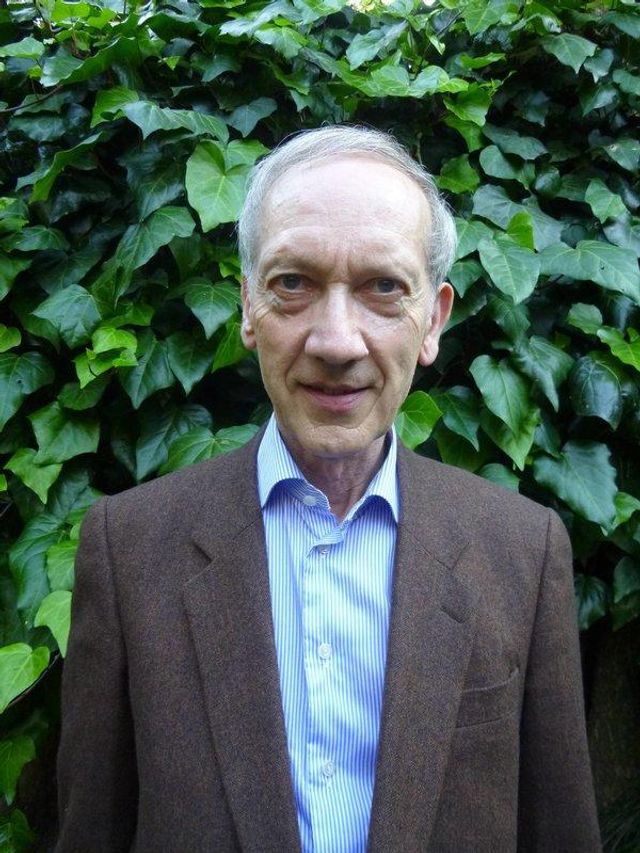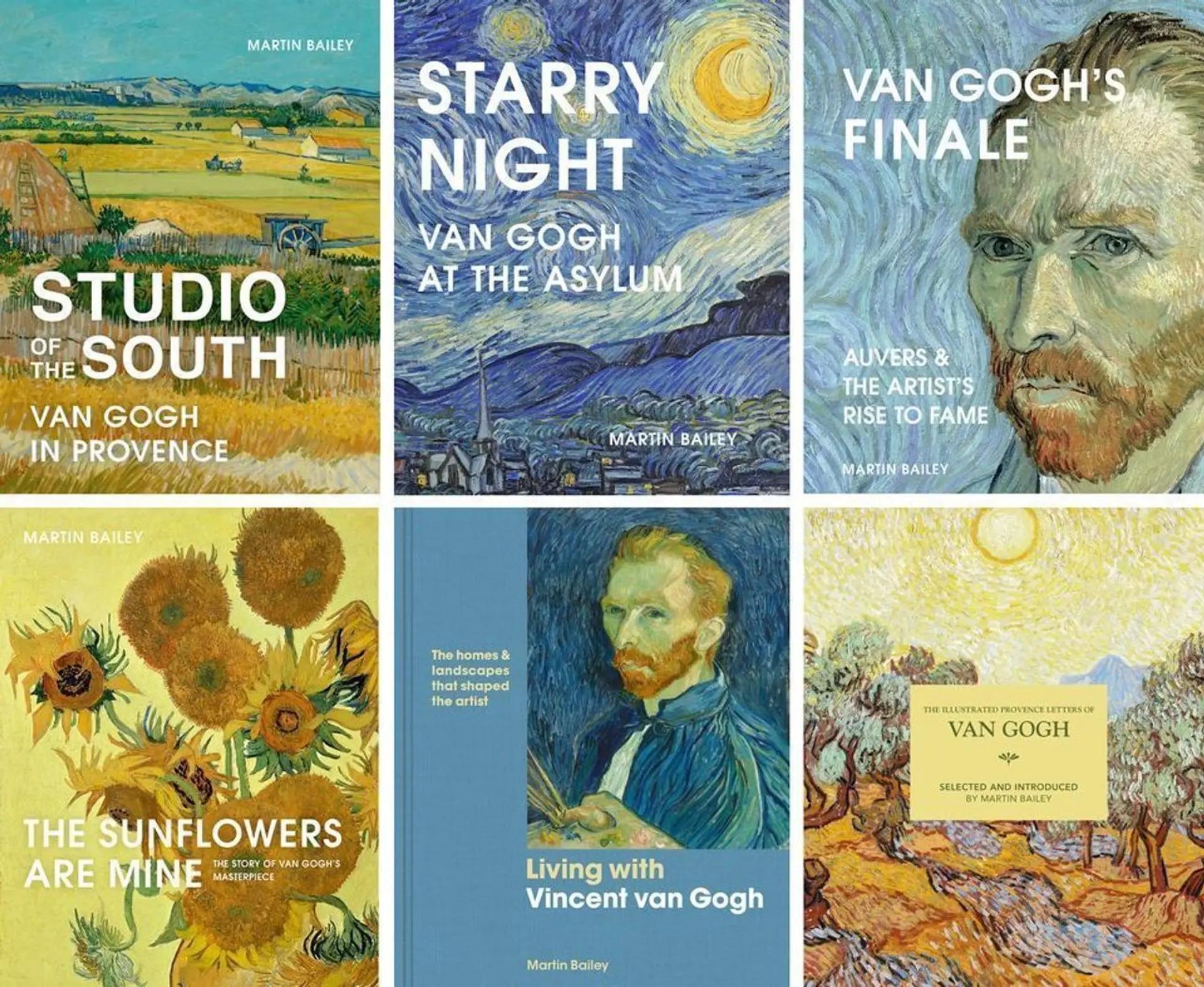Rotterdam’s Boijmans Van Beuningen Museum this week acquired Van Gogh’s Still Life with Potatoes. Countless artists have painted still lifes of fruit, with their pleasing shapes and bright colours. Think of Paul Cezanne’s apples, dating from around the same time. But potatoes, with their dull skins and surface imperfections, have unsurprisingly attracted little interest.
For Van Gogh, however, potatoes held great appeal, since he equated them with a simple rural life. In April 1885 Vincent wrote to wrote to his brother Theo: “If a peasant painting smells of bacon, smoke, potato steam—fine—that’s not unhealthy—if a stable smells of manure—very well, that’s what a stable’s for.” His first early masterpiece was The Potato Eaters (May 1885), depicting a family gathered around a basic meal in their rustic hut.
Still Life with Potatoes had been on loan to the Boijmans Van Beuningen Museum for around forty years, but it has now been acquired from its anonymous Dutch lender. Although the price is not being disclosed, it is believed to have been around half its market value (the full value would probably be several million Euros). The museum raised its half from a variety of sources, led by the Rembrandt Association, a charity which provides contributions towards Dutch museum acquisitions. The new acquisition will go on display in the museum’s Depot in Rotterdam on 25 March (for one year), in a display entitled Beloved.
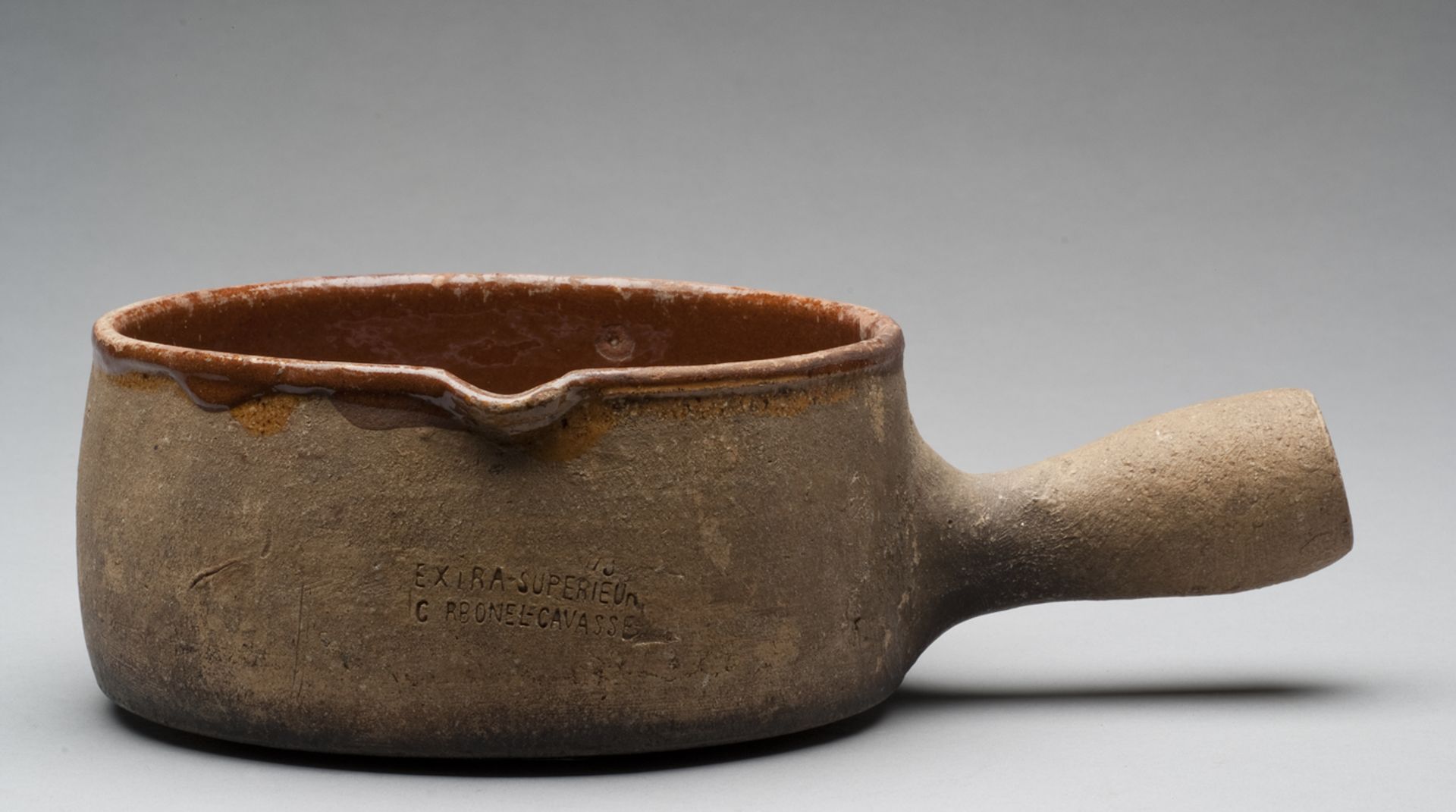
“Parisienne” casserole, made in Vallauris (late 19th century)
Guy Mombel, France
In Still Life with Potatoes Van Gogh piled up potatoes in a handmade earthenware casserole. The type of vessel has been identified in a book by Alexandra van Dongen, the Boijmans curator of historical design, as a “Parisienne” type produced in Vallauris, in south-east France. She believes it likely that Theo had one in the kitchen of his Paris apartment, where Vincent was staying.
Vincent presumably wanted to paint a still life, but in winter there were no flowers, his favourite subject matter during his Paris period. He therefore simply went to the kitchen, taking the casserole and a pile of potatoes which were awaiting being peeled and cooked. Alongside the casserole Van Gogh piled up a further ten or so potatoes, including a particularly large one. These he set on a rumpled dark blue cloth on what may have well been the kitchen table.
Van Gogh successfully captured the texture of the rough potato skins. He had first set out to do this with three earlier pictures of potatoes in baskets, painted in the village of Nuenen in October 1885, a year or so earlier. Vincent had then written to Theo, saying that he was trying to “express the material”. He wanted the portrayed potatoes to become “lumps that have weight and are solid, which you’d feel if they were thrown at you”.
Until a few years ago the newly acquired still life was also assumed to have been painted in October 1885, but it has now been established that it was done in the winter of 1886-87 (or possibly autumn 1886), while Van Gogh was living in Paris.
There are several reasons for this later dating for the Boijmans picture to the Paris period. The canvas had the printed name of the Parisian art supplier, Tasset & L’Hôte. Investigations have revealed that the potato still life was overpainted on top of a discarded earlier picture of flowers, which was one of Van Gogh’s favourite motifs in Paris. Vallauris earthenware was common in France, but much less so in the Netherlands. And finally, the colours of the Boijmans picture are much brighter than the three potato still lifes done in Nuenen in 1885. It was in Paris that his palette lightened, under the influence of the Impressionists.
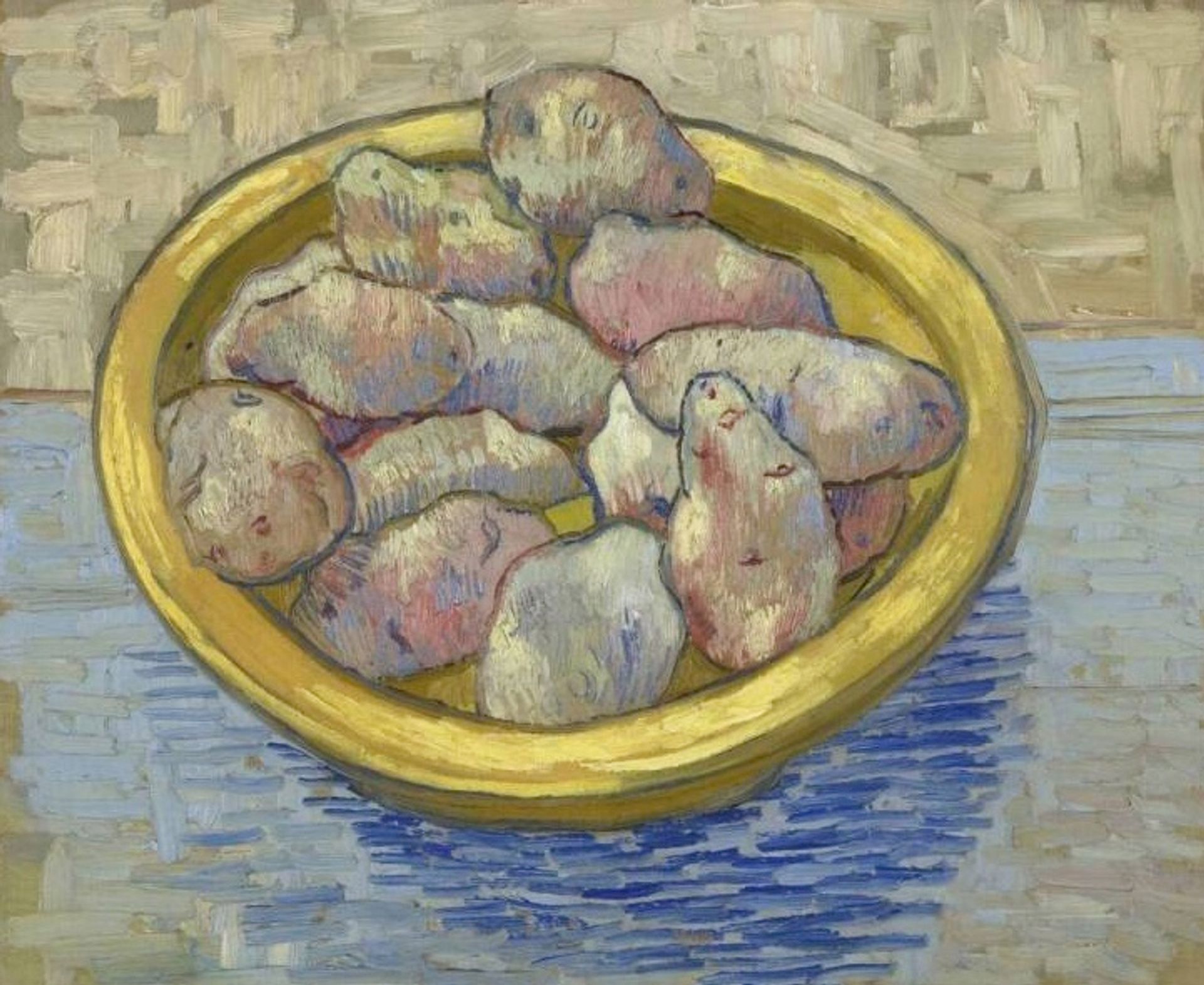
Van Gogh’s Still life with Potatoes (January 1889)Kröller-Müller Museum, Otterlo
Van Gogh had one final go at the potato motif in January 1889, two years afterwards in Arles. This later work, also entitled Still life with Potatoes, is so different from the Boijmans picture. It is much more schematic, with its yellow bowl set against the complementary blue tablecloth. The perspective is unusual, almost presenting a bird’s eye view of the potatoes, which are more colourful. Van Gogh’s art was constantly evolving, he never stood still.
Other Van Gogh news:
- A BBC radio programme presented by Rosie Millard, Dead Famous, featured Van Gogh on 12 March, with an unusual take on the artist’s rise to fame.
- Head of a Peasant Woman in a White Cap (December 1884) was sold at the Tefaf art fair in Maastricht by the New Orleans-based M.S. Rau gallery, where it was priced at around $5m. A Rau spokesperson says that the buyer is outside Europe and is “a private collection that will be open to the public”.
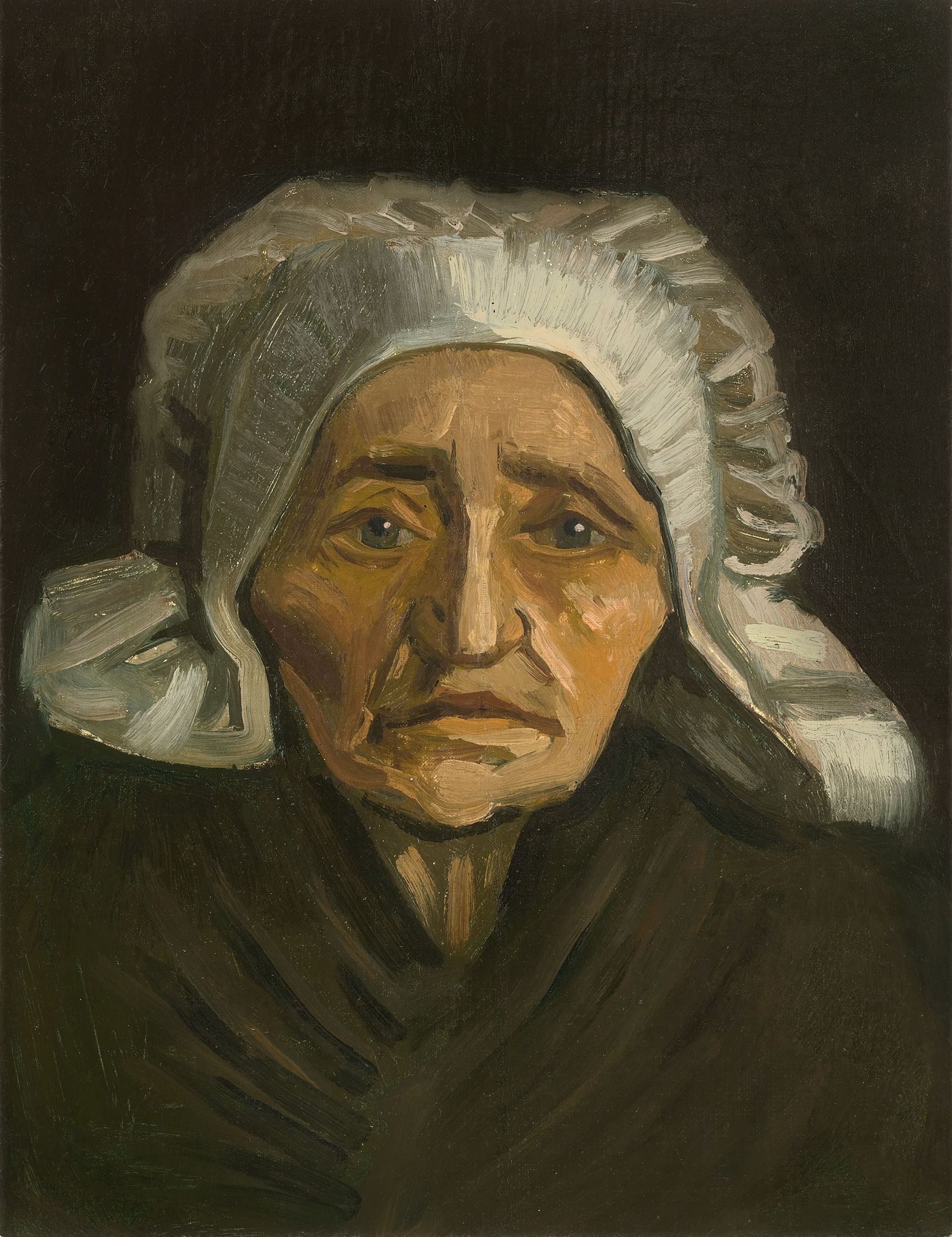
Van Gogh’s Head of a Peasant Woman in a White Cap (December 1884)
M.S. Rau, New Orleans



